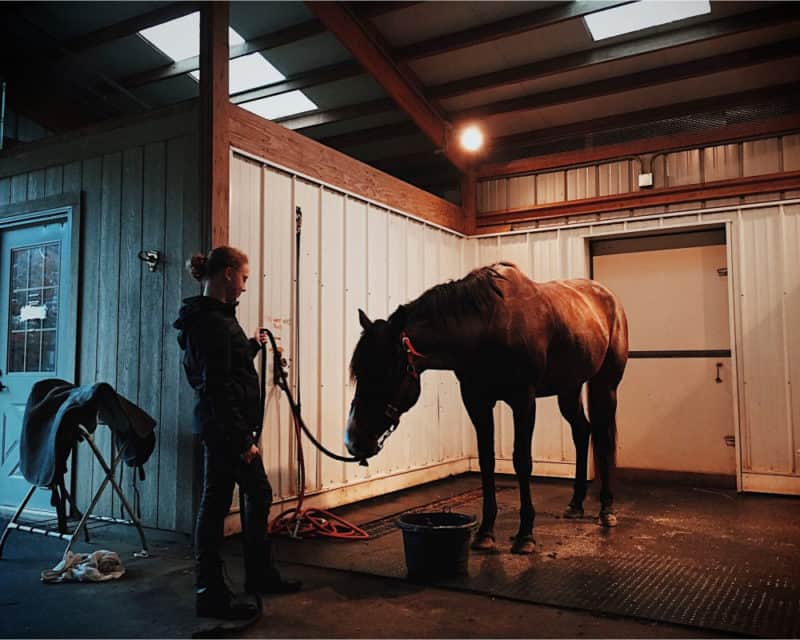Whether you are soon to become a horse owner for the first time or are involved in the care at your local stables, it can feel overwhelming knowing where to begin. Even experienced horse owners continue to learn new things, so never feel discouraged to ask for some advice and learn from others! To help you along the way, we cover some of the essentials you should consider when looking after a horse.
Finding the right rug

There are so many different types of rugs on the market, each with different features, so knowing where to start can be confusing. Researching the best type of rug for the season and your horse’s lifestyle is likely to be the best approach as the answer differs from person to person. In colder months, fleece rugs are a great extra layer of warmth, whereas, in the summer, fly sheets for horses are recommended to keep biting insects away.
The basics of feeding
The amount of food your horse requires will be based on its size, weight and workload, but as standard, it is recommended that they eat around 2.5% of their body weight daily. The majority of their feed will consist of roughage such as grass and hay, but to achieve a balanced diet, hard feed and supplements are required to provide them with the nutrients they need to stay healthy. Sticking to a routine and making any changes to their diet gradually will help you find a routine that works for you both so you can keep a close eye on their weight and wellbeing. As well as providing enough food, your horse should have constant access to clean water, which is regularly changed to keep it fresh.
Maintaining a neat and tidy coat

Knowing how to groom your horse will ensure you can keep them looking and feeling their best. Equine health supplements are ideal for taking care of horses and keeping their hair and skin in tip-top condition. Brushing off excess hair will maintain a tidy coat and remove any build-up of dirt but be mindful of any sensitive areas or wounds they may have and take extra caution around the eyes and nose. The tail is particularly prone to tangling, so taking the time to carefully brush the hair and apply a detangling spray will make it easier to manage. Another key area to maintain is the feet; any mud or stones that build-up will need picking out, and keeping a close eye on the condition of the shoes will ensure they get changed when required.
General health and wellbeing
Once you get to know your horse, it will become easier to identify and change their behaviour or appearance, which needs checking. You should always be registered with a local veterinary practice before needing their assistance, so the process is not delayed. Understanding when to seek veterinary treatment will ensure they get the professional care they need in due course. Look out for signs such as any abnormal body temperatures, changes in breathing patterns, a lack of appetite, sudden change in attitude or signs of an infection and contact your vet to discuss.

